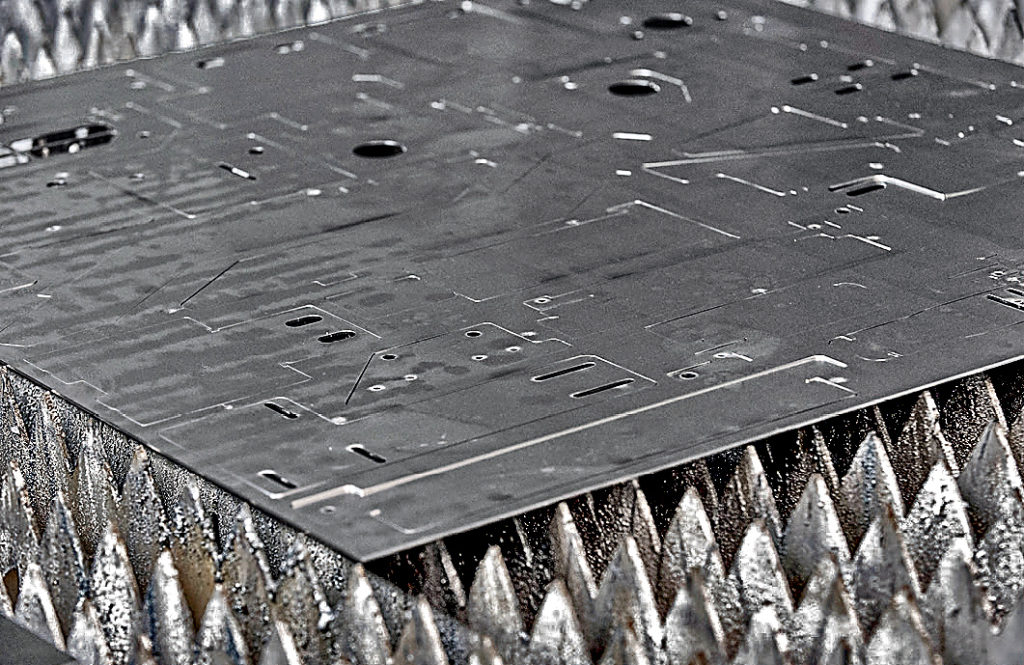With the new TiltPrevention function in its BySoft 7 software, Swiss laser cutting machine manufacturer Bystronic has increased reliability of sheet metal component production by minimising the risk of cut parts protruding from the surface of the material being processed.
The intelligent function enables users to create cutting sequences that reduce the likelihood of parts tilting and causing a collision with the nozzle as it travels over the sheet.

If an impact does occur, the job has to be stopped while the situation is rectified, causing loss of production, probably scrap components and in the worst case, damage to the cutting head.
A further problem is that, even if the cutting program has completed successfully, the grippers of an automated handling system may have difficulty in picking up a sheet in which some of the components are protruding.
Traditionally, inclusion in the cutting program of micro joints or tabs to keep components in place within a sheet have been a way of preventing parts from lifting, but this results in subsequent time-consuming shaking of the parts from the skeleton after the nest has been cut.
There is the added complication that broken tabs leave burrs that may have to be mechanically removed.
Bystronic’s alternative approach is to use software to guide the path of the laser head during the cutting process so that, as far as possible, it avoids risky sections in a cycle where parts could tilt.
Within its BySoft 7 nesting and control software, the TiltPrevention assistant automatically compiles cutting plans in such a manner that parts are less likely to tilt as they are being profiled. This largely eliminates the need for micro joints.
An algorithm calculates the likely mechanical behaviour of each part before it is cut out of a sheet, taking into account a range of parameters including the density of the material, the geometry and weight of the part, the pressure of the assist gas flow and the positioning of the nested parts on the sheet.
TiltPrevention then recommends the start and end points of the laser nozzle so that tilting of the parts after cutting is prevented as far as possible.
In addition, the function proposes the best possible route for the head over the metal sheet, creating an ideal cutting sequence for all parts on the plan.
Users are able to adapt the resulting program to modify the nesting of parts, reposition the start and end points of laser cutting and add micro joints where required.
Injudicious choice of laser cutting strategy can cause cut parts to tilt and obstruct the path of the laser cutting nozzle
 Engineer News Network The ultimate online news and information resource for today’s engineer
Engineer News Network The ultimate online news and information resource for today’s engineer





